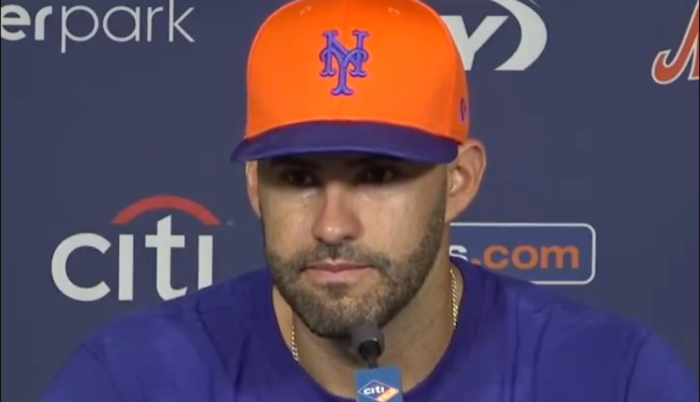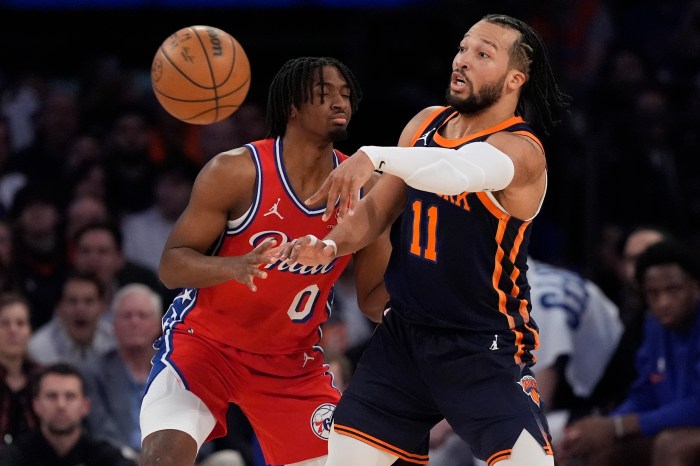
They’re on the ball.
The athletes are the stars of the U.S. Open, but the unsung heroes may be the ballpeople who make sure each match runs smoothly.
It’s a competitive gig — hundreds tried out for just the 80 or so openings for this year’s Open, going on now through Sept. 11, to be front and center of the action at the USTA Billie Jean National Tennis Center in Flushing.
amNewYork spoke with Long Islander Laray Fowler, 31, who has been a ballperson since she was 13 and has never missed a summer, about the job.
How did you get started?
I grew up playing tennis, and my aunt was a ballperson. She was a ballperson when it was at the West Side Tennis Club.
What brings you back year after year?
The relationships I made. They’re some of my best friends doing it.
What skills are needed to be a good ballperson?
Good hand-eye coordination, good footwork. They’re light on their feet and quick.
Given your experience, do you still have to try out to be a ballperson, or is it guaranteed?
Nothing’s guaranteed in life ever, but I don’t have to try out anymore. I do participate with the tryouts to help the new people that are trying to get this job.
What’s the tryout like? What are people tested on?
It’s their throwing ability, how fast they run, their hand-eye coordination.
How do you prepare for the U.S. Open each year?
I start running in April. I’ll start off a mile a day, then three miles a day. As the weeks get closer to the tournament, I try to get more miles in. I also do SoulCycle. I try to stay active throughout the whole year. I try to stay fit and keep my endurance up.
Once you’re in a match, how physically demanding is it?
It’s pretty physically demanding, because you actually have to make sure the players are comfortable, you’re meeting their needs — when they want towels, water, bananas. You have to do it in a discreet way because you’re supposed to be invisible, but helpful at the same time.
How is it with the heat?
You need to just make sure you have breakfast, you hydrate yourself and constantly have water. There is water on the court for us to drink.
What role do you usually do?
I’m a swing — I am able to do both the net and the back. I do the net the majority of the time.
What’s the schedule like?
We have three different shifts — 9 am, noon and 3 pm. We work an eight-hour shift. We rotate every two hours…around the whole facility, we’re never on one court. I could be on Court 5 my first shift, and then Court 17 my next, or Ashe. It doesn’t matter what court you’re on, they’re all good courts. And it never winds down. There’s other matches that are going on around the grounds [throughout the Open].
What’s it like to be there right in front of the action?
It’s a very unique experience. It’s actually very humbling and exciting all at the same time. I get nervous still to this day, before and during every match, because this is their job, this is their livelihood. If I interfere in someone’s match, then I could mess up them winning or them getting to the next round.
Do you have any memorable moments over the years?
My favorite moment was with Kim Clijsters, she’s my favorite player. She won her first Grand Slam in 2005 at the U.S. Open, and I was there when she won that. She retired to have her first child and then decided to come back a few years later and ended up winning again, and I happened to be there for that moment as well.
What are you looking forward to about this year’s Open?
I’m looking forward to the new facility and seeing the new Grandstand and seeing the roof being completed. Hopefully it rains so we can close it and see how that works.
When do you think you’ll stop?
I’ll do it until I can’t walk anymore.
BY THE NUMBERS
480: People who tried out to be ballpersons at this year’s U.S. Open
275: Total ballpersons at the U.S. Open each year
80: Rookie ballpersons selected from tryouts
14: Age minimum of ballpersons
$9: Minimum hourly pay

















